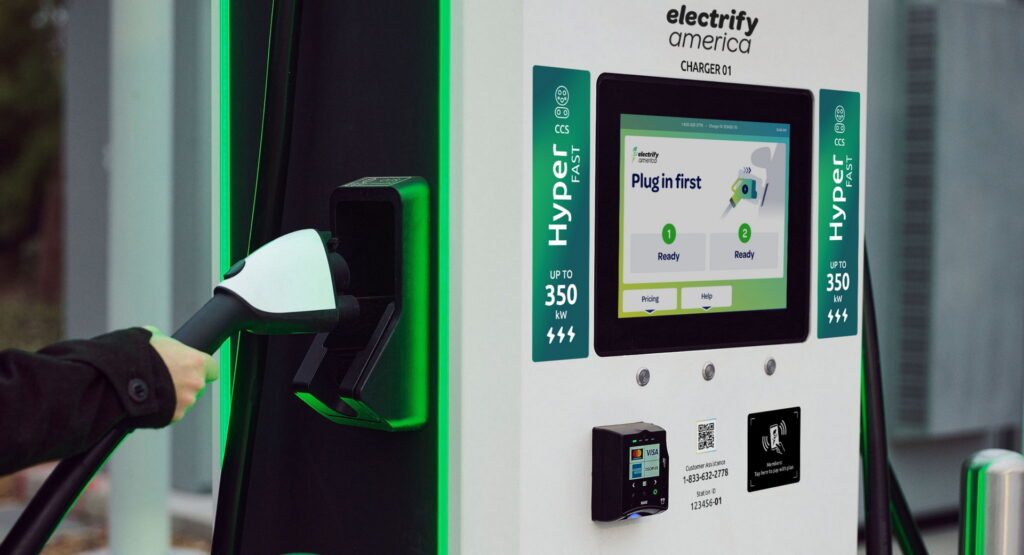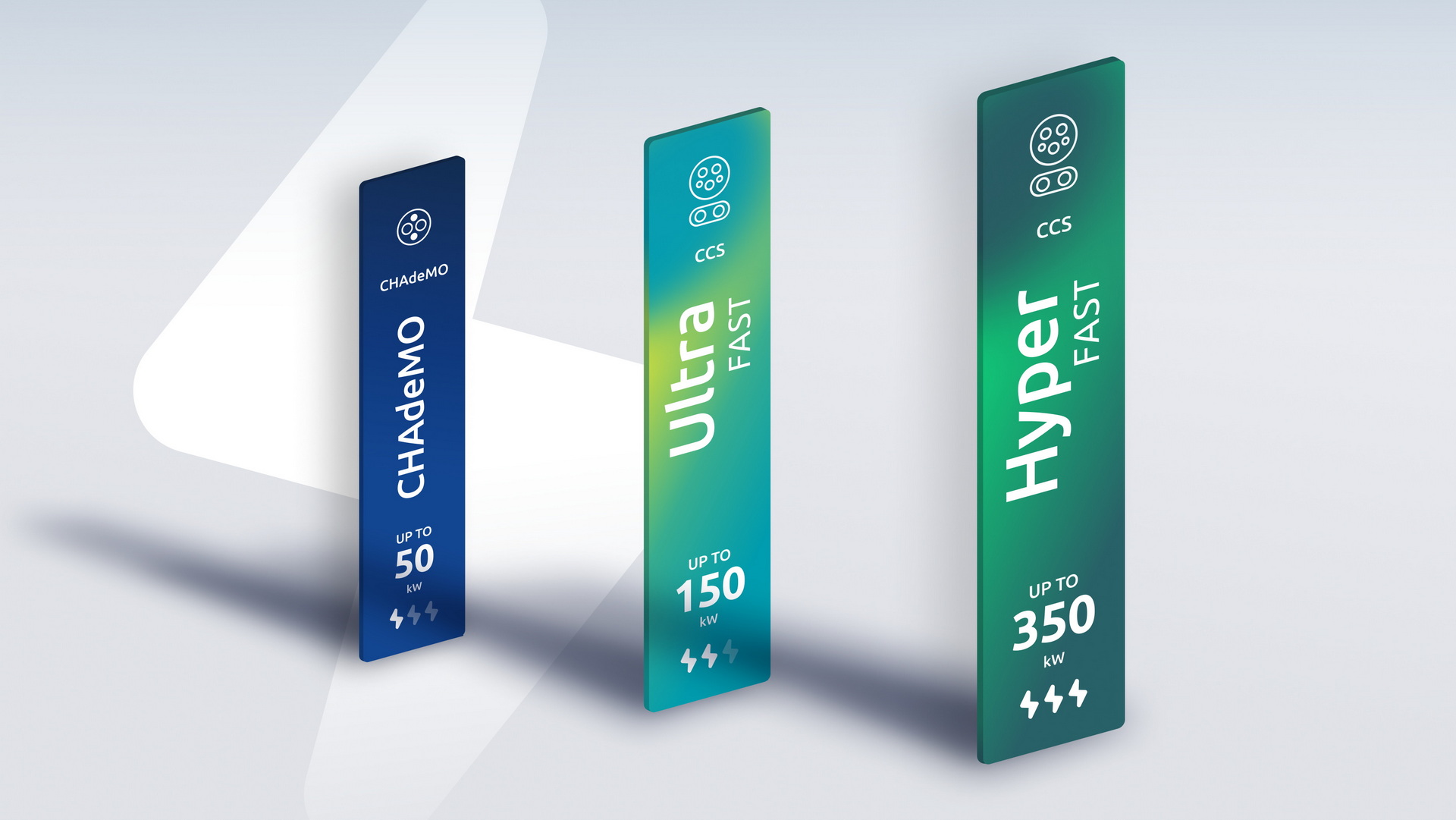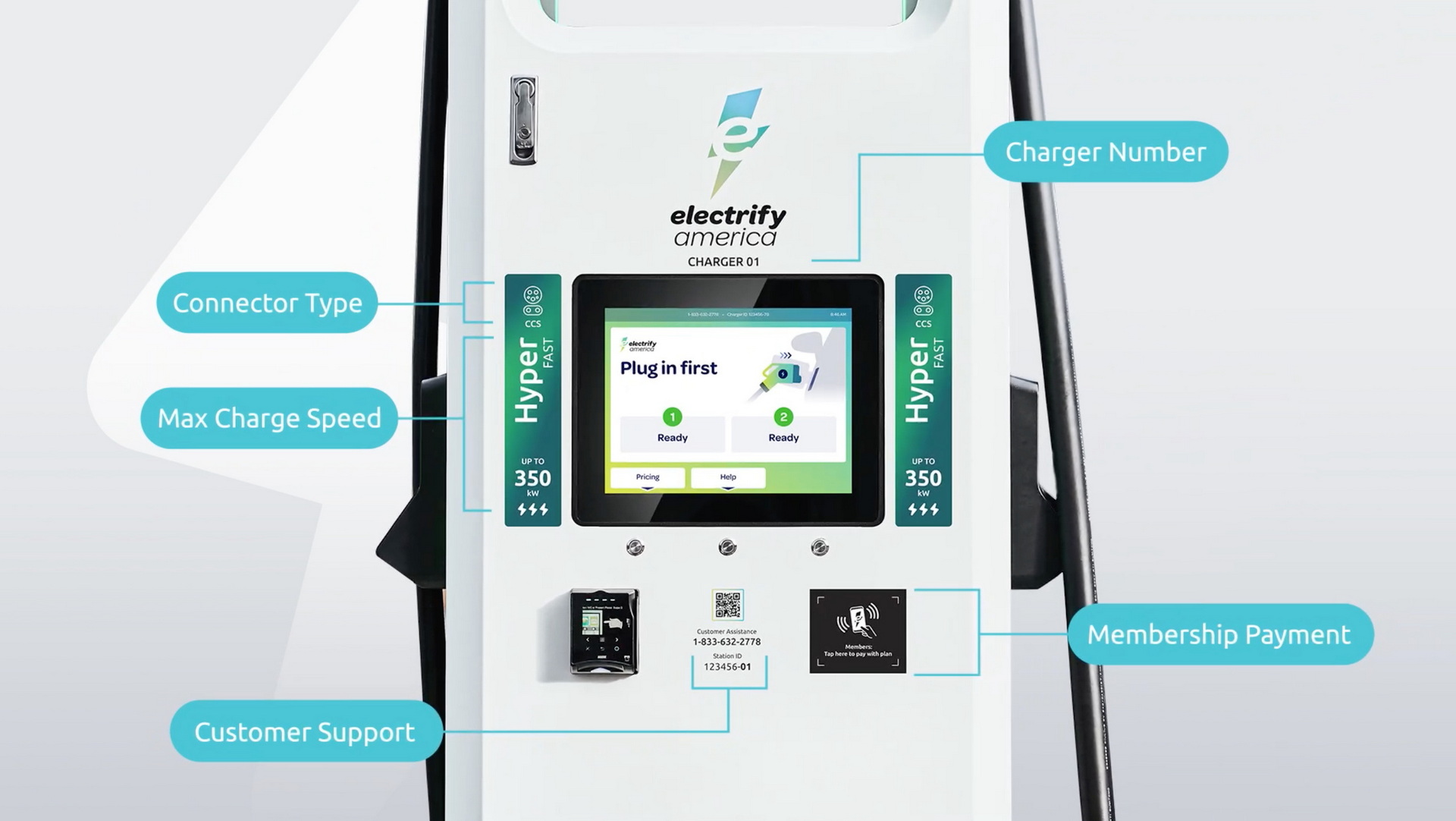Electrify America wanted to simplify the charging experience, so it decided that easy-to-understand names for charging levels that use vernacular speech were necessary. It, therefore, did extensive market research and is now revealing those names.
So proud is the company of its work, that it hasn’t trademarked it and is making it available to all charging providers, in order to “set a universal standard.”
Unfortunately, the names are Hyper-Fast and Ultra-Fast and I can’t be the only one who thinks that the distinction between these two modifiers is less than simple. Although I agree that hyper does, ultimately, sound faster than ultra, they could have made the distinction much easier to understand by just calling 150 kW chargers “Fast” and 350 kW units something more.
Read Also: Nissan Approves Charger That Can Draw Energy From LEAF To Power Your Home
But here we are, and 150 kW charging will be called “Ultra-Fast” and signified by two thunderbolts, while 350 kW charging will be called “Hyper-Fast,” and they will be signified by three thunderbolts. To make the distinction even clearer, the company has also designed new labels for each speed.
“We want to help make the transition to EV charging easier by translating kilowatt ratings into simpler names like Hyper-Fast and Ultra-Fast with corresponding colors to help them make a selection at the charger,” said Robert Barrosa, senior director, sales, business development and marketing of Electrify America and Electrify Canada. “As EV sales continue to grow, it’s important that we continue to educate everyone on how easy public charging can be, ensuring consumer comfort with making the switch. It should not require a calculator to figure out what charger’s power output may best match the capabilities of their EV.”
Finally, Electrify America announced that it will also roll out “Balanced” power stations to its charging network. These allow two different vehicles hooked up to the same box to charge at two different levels based on need. If a vehicle can charge at speeds of up to 350 kW, then it will, but if the next vehicle can only charge at speeds of up to 150 kW, it won’t have to look for a different charging box.
The company plans to roll out its novel labeling on new and existing charging stations this fall. The new Balanced power technology will also start to arrive at U.S. charging location this fall, and in 2023 in Canada.






